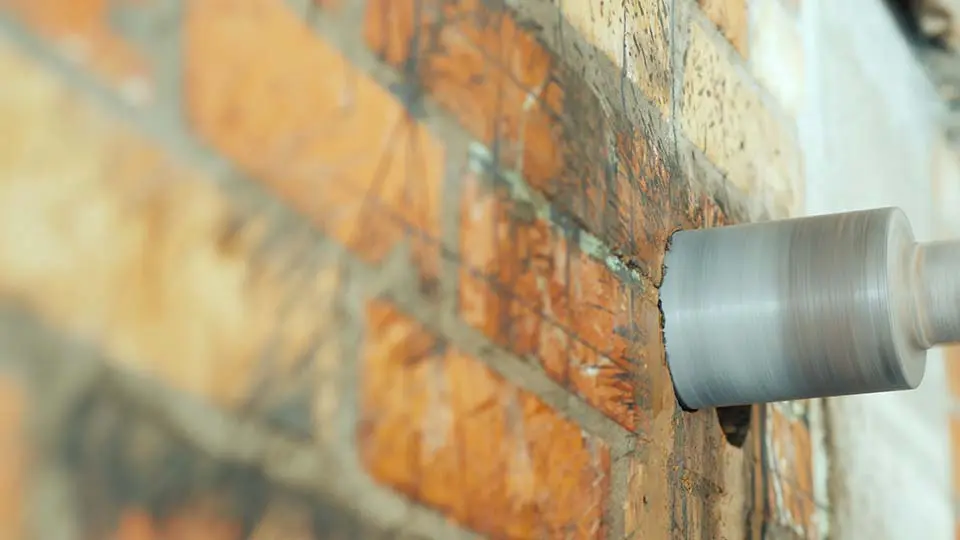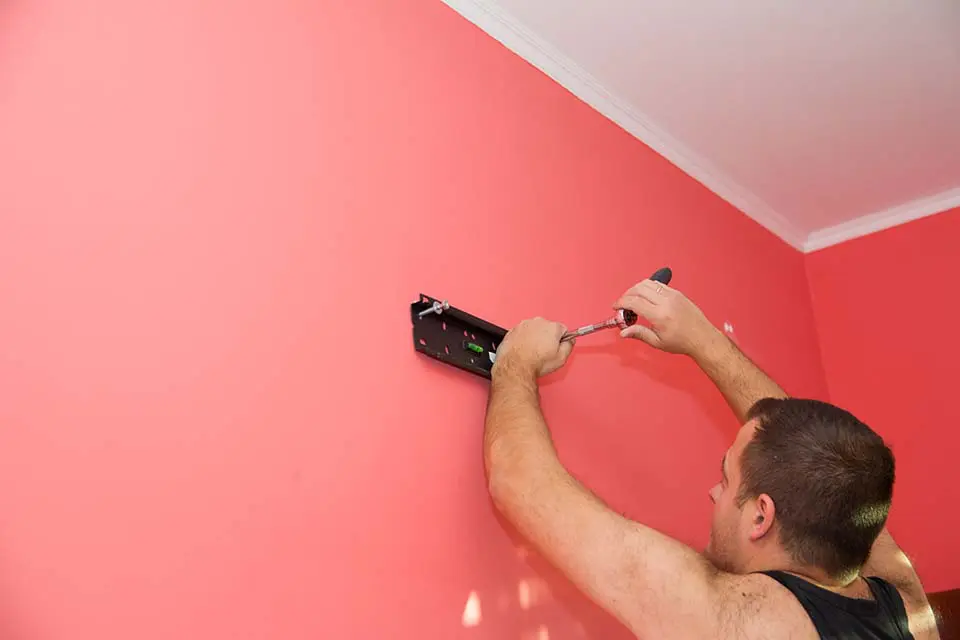We are all guilty of holing upside and watching tv when it is cold outside- especially if you have a brick hearth. However, if you want to mount your TV over a brick fireplace, it can get tricky…
Contents
Can you mount a TV on brick?
Yes, a wood-burning brick fireplace will require some additional effort if you plan to hang a television above it- on that hard-surfaced brick wall.
It may be difficult, but it’s not insurmountable. In recent years, a growing number of people have mounted their televisions in this area. It’s not always possible for people to find a wall in their living room or den where they can hang their TV.
This section of wall is all that remains between the entrances and windows. The fireplace is a popular choice for those who want to create a modern or stylish look in their home. There are a few things to keep in mind when it comes to successfully placing a TV above a fireplace.
As a result, a flat-screen television mounted above a fireplace will increase the viewing experience while also making a space appear more modern and contemporary.
Mounting your TV over a brick fireplace
To avoid damaging the TV, take the necessary precautions. Temperatures generated by a fireplace during usual operation should meet the heat guidelines in the user manual before installation. When done at the proper distance and with adequate airflow, mounting a flat-screen TV above a fireplace is generally safe.
Make sure you’re prepared before you begin
Depending on the display type, the appropriate wall mount must be selected from a wide range of sizes and styles. Consider the screen height, as well as the specifications of the electronics, as well. Contact a professional electrician or television installer if you are unsure of the ideal wall mount. You may need the following tools:
- Level
- Drill Bit
- Wrench
- Shop-Vac or Wire Brush
- Hammer Drill
- Standard Drill
- Safety Goggles
- Marker / Pencil
When anchoring into brick, it is occasionally essential to anchor to the mortar joint, depending on where the holes in the bracket line up. When it comes to improving holding values, using mortar as a base material is a good option, but it all comes down to quality and quantity. This kind of anchoring is also acceptable in some cases.
Determine the installation height
Assemble the bracket to the TV using the manufacturer’s instructions while the TV is face down. For a two-piece TV bracket, attach it to the rear of your TV as if you were mounting it on a flat surface. Measure the distance from the bottom of the wall bracket to the bottom of the television.
You’ll need to add this dimension to the desired height of the TV to locate the bracket mount on the wall. To get the bottom of the TV to be 48 inches from the ground, you’ll need to measure 54 inches. Remove the television bracket. Remove the wall bracket from two-piece brackets.
Mark and drill the holes

Assemble the wall bracket by placing it against the wall at the height set in step 2 and holding it there. Make sure the bracket is level by using a level. After that, mark each screw hole on the block with the permanent marker. The bracket should be shifted to avoid the mortar lines and a new mark made for the drill hole.
A mortar anchor’s grip will gradually weaken because it is much softer than brick. A half-inch out from the brick’s edges can cause it to crack, so always drill into the brick. Make sure to keep in mind that many brackets come with a variety of screw holes. Bracket instructions will detail how many and which of the brackets you’ll need to purchase.
Attach a masonry bit to the drill by the instructions on the concrete anchors or masonry screws you ordered. Wrap a small piece of painter’s tape around the drill bit at the place where the anchor or screw is longer than the drill bit. Take advantage of any hammer drill you have by turning it on. Drill at fast speed if necessary.
Squeeze the trigger carefully while placing the drill bit’s tip on one of the markers to begin digging into the brick. Increase the drill speed as the bit gets further into the block. Remove some of the brick dust from the hole by pulling the bit out a little bit at a time. Continue drilling until you get to the desired depth marked on the tape, then stop.
Install the concrete screws
Assemble your wall by taping the concrete screws into their holes until they’re flush. You may need to remove more brick dust if they don’t install completely.
Install the wall bracket and TV

Washers can be inserted into the screws if needed. Hand-thread the screws into the drilled holes while holding the wall bracket in place. Tighten one screw after the driver bit or socket has been attached to the ratchet. After checking for levelness, tighten the other screws on the bracket to ensure that it’s safe and secure.
If you’re using a two-piece bracket, all you need to do is attach your existing TV brackets to the wall. Make sure you follow your bracket’s directions and don’t skip this step if you have a locking screw or tab. Make sure you have a buddy to hold the television in place as you screw the screws into your TV’s back. To disguise as much of the cords as possible, consider positioning a piece of furniture behind the TV.
How to hide the wires with a brick fireplace
Precautions
https://www.instagram.com/p/CV5HAbvlO4I/
The easiest approach to preserve your TV when it’s mounted over a brick fireplace is to keep it stationary. However, doing so drastically reduces the quality of your watching experience. You’ll need a motorized or tilting wall mount if you want to watch TV from any angle in the room. This allows you to change the angle of the TV so that you can receive the best picture possible.
For LED TVs, a tilting mount is very important. As a result of the narrow viewing angle, these frequently require adjusting. An OLED TV, which can be viewed from virtually any angle, would be a better choice. It’s also not good for your electronic devices to be exposed to the heat from a fireplace while it’s in operation. Mounting a TV above a fireplace requires careful consideration of how to safeguard your equipment and keep them cool.
In warm climes, when the fireplace is rarely used, heat protection is not a concern. Remember that even when the flue is entirely open, there will still be a lot of heat and a lot of soot. When a television is put above a fireplace, it is at risk of being damaged since heat rises. But there are ways to keep your devices safe from overheating, such as placing a shelf or mantle between the fireplace and your television. Make sure there is enough space between the two for your protection. It’s also a great way to make your fireplace look modern!
